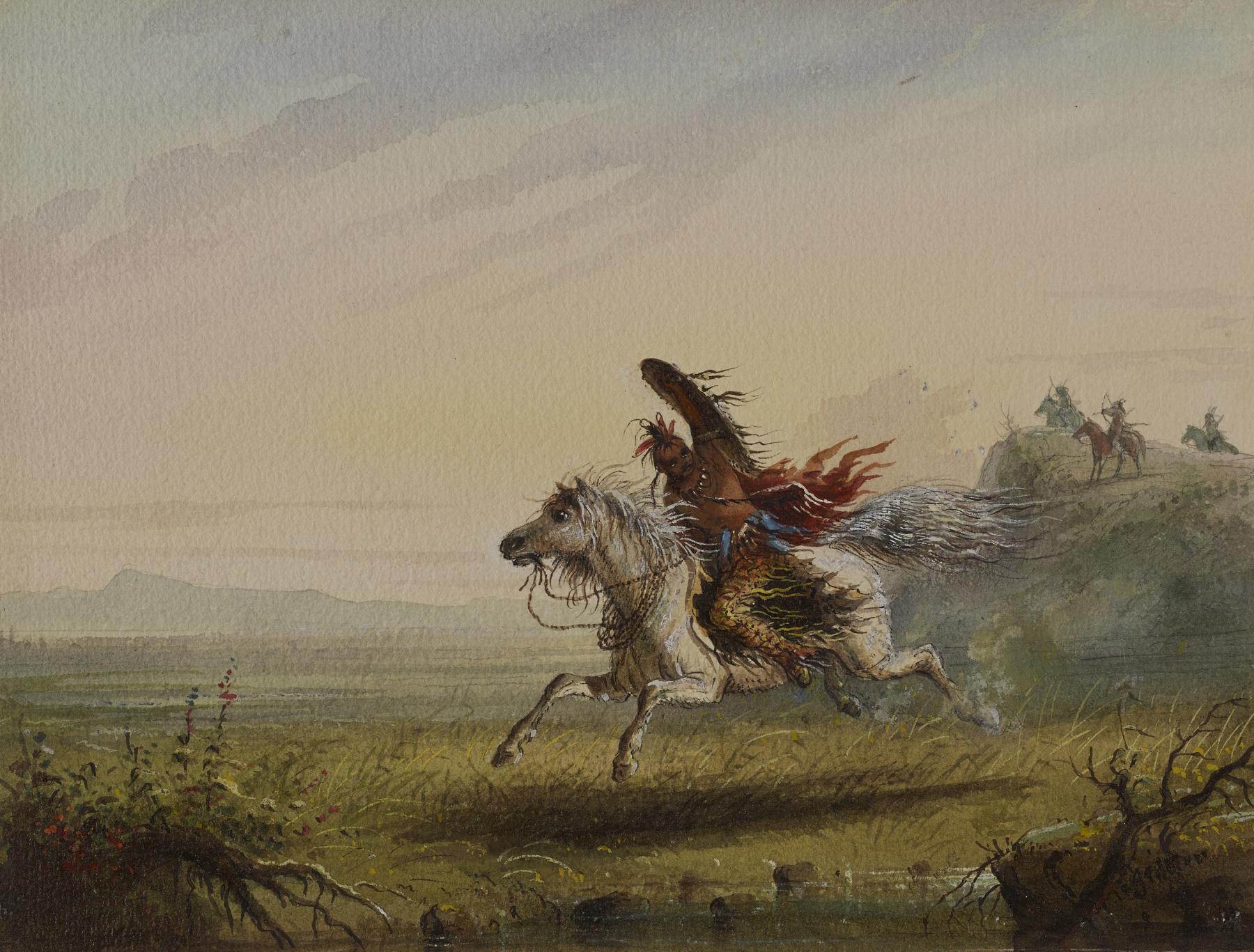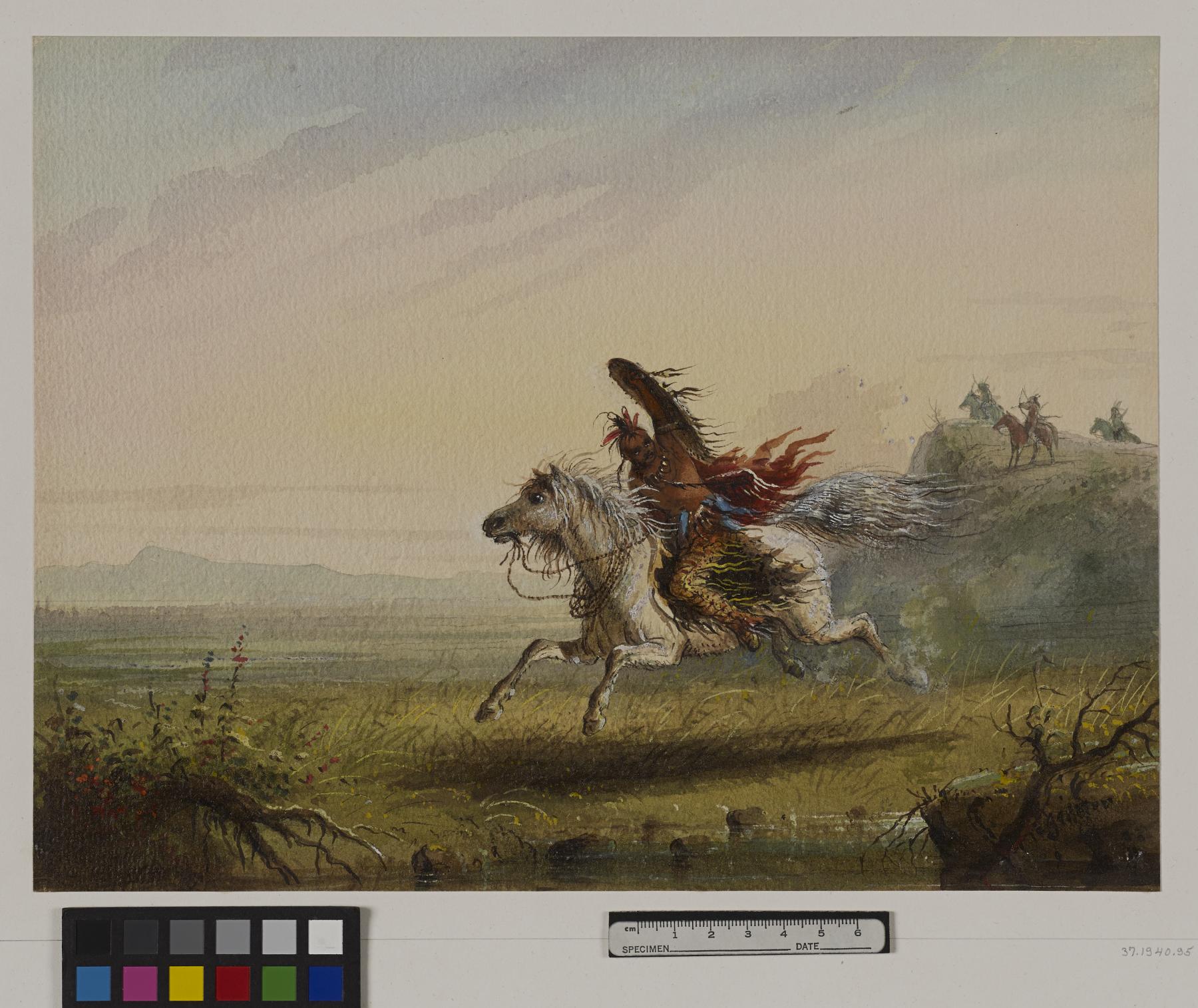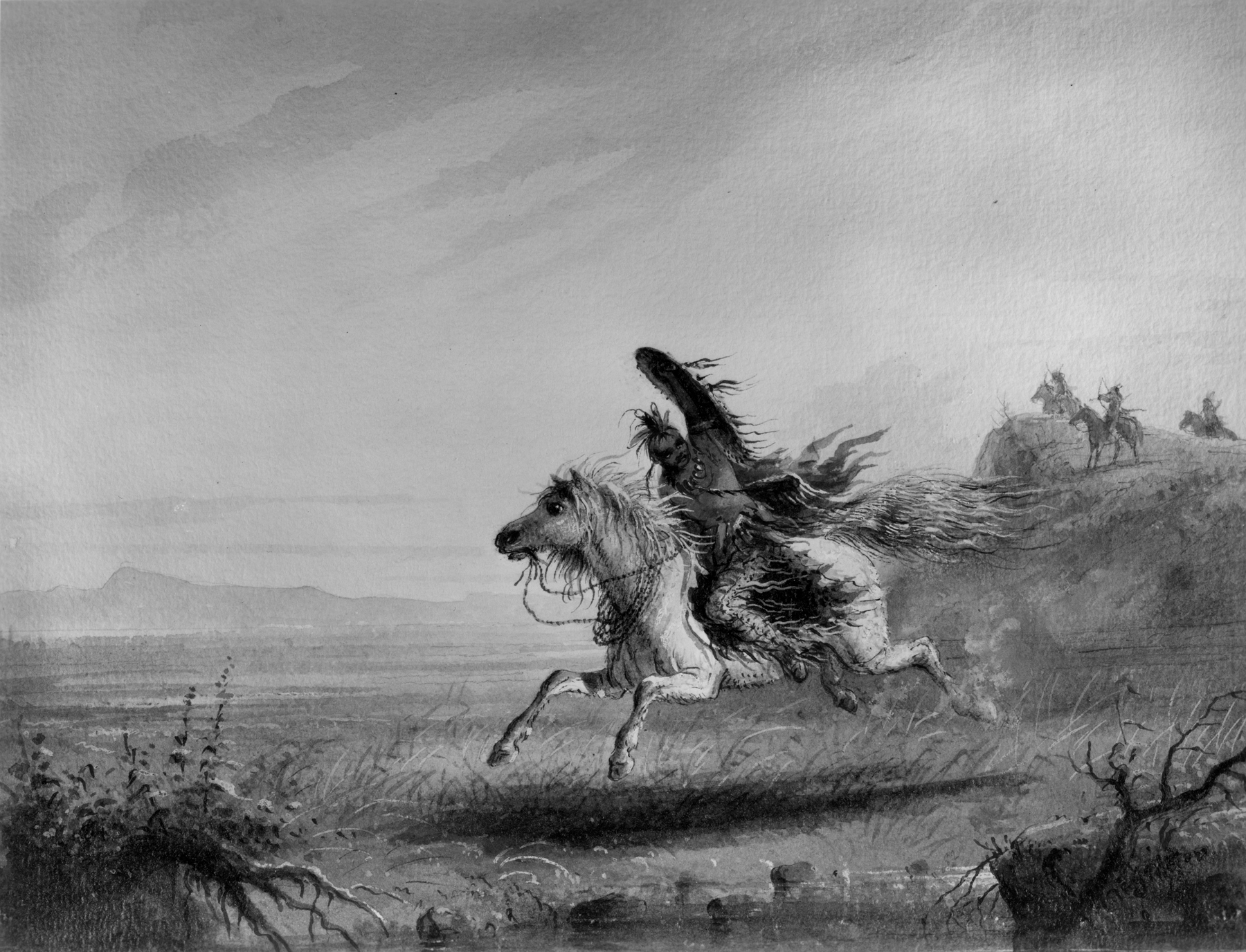Beating a Retreat
(18th and 19th Centuries )
Extracts from Alfred Jacob Miller’s original text, which accompanied his images of Native Americans, are included below for reference. These words, which shaped how Miller’s contemporaries viewed the watercolors, reveal the racism and sexism embedded in 19th-century exploration and colonization of the western part of what is today the United States.
"Although this Sioux Indian has an immense range of his own to hunt over, he is not content with it, and we find him here on the grounds of the Blackfeet. The retreating Indian is defending himself as he runs, as best he can; the shield which he uses is covered with bull-hide, and becomes so tough in time that no arrow can pepetrate its surface. His great care is to protect the head and body, letting his extremities take their chance. In case an arrow penetrates his leg or arm, he still continues his flight to a place of safety;- his capability to bear pain, and patience under its infliction, is wonderful. When he is no longer pursued, if wounded, he sits down and cuts out the arrow;- compressing the wound with a bandage drawn tightly around it and inclosing medicinal plants very often, if they are to be found." A.J. Miller, extracted from "The West of Alfred Jacob Miller" (1837).
In July 1858 William T. Walters commissioned 200 watercolors at twelve dollars apiece from Baltimore born artist Alfred Jacob Miller. These paintings were each accompanied by a descriptive text, and were delivered in installments over the next twenty-one months and ultimately were bound in three albums. Transcriptions of field-sketches drawn during the 1837 expedition that Miller had undertaken to the annual fur-trader's rendezvous in the Green River Valley (in what is now western Wyoming), these watercolors are a unique record of the closing years of the western fur trade.
Provenance
Provenance (from the French provenir, 'to come from/forth') is the chronology of the ownership, custody, or location of a historical object. Learn more about provenance at the Walters.
William T. Walters, Baltimore, 1858-1860, by commission; Henry Walters, Baltimore, 1894, by inheritance; Walters Art Museum, 1931, by bequest.
Conservation
| Date | Description | Narrative |
|---|---|---|
| 4/1/1950 | Treatment | cleaned |
Geographies
USA (Place of Origin)
Measurements
H: 9 15/16 x W: 12 1/4 in. (25.3 x 31.1 cm)
Credit Line
Commissioned by William T. Walters, 1858-1860
Location in Museum
Not on view
Accession Number
In libraries, galleries, museums, and archives, an accession number is a unique identifier assigned to each object in the collection.
In libraries, galleries, museums, and archives, an accession number is a unique identifier assigned to each object in the collection.
37.1940.95







